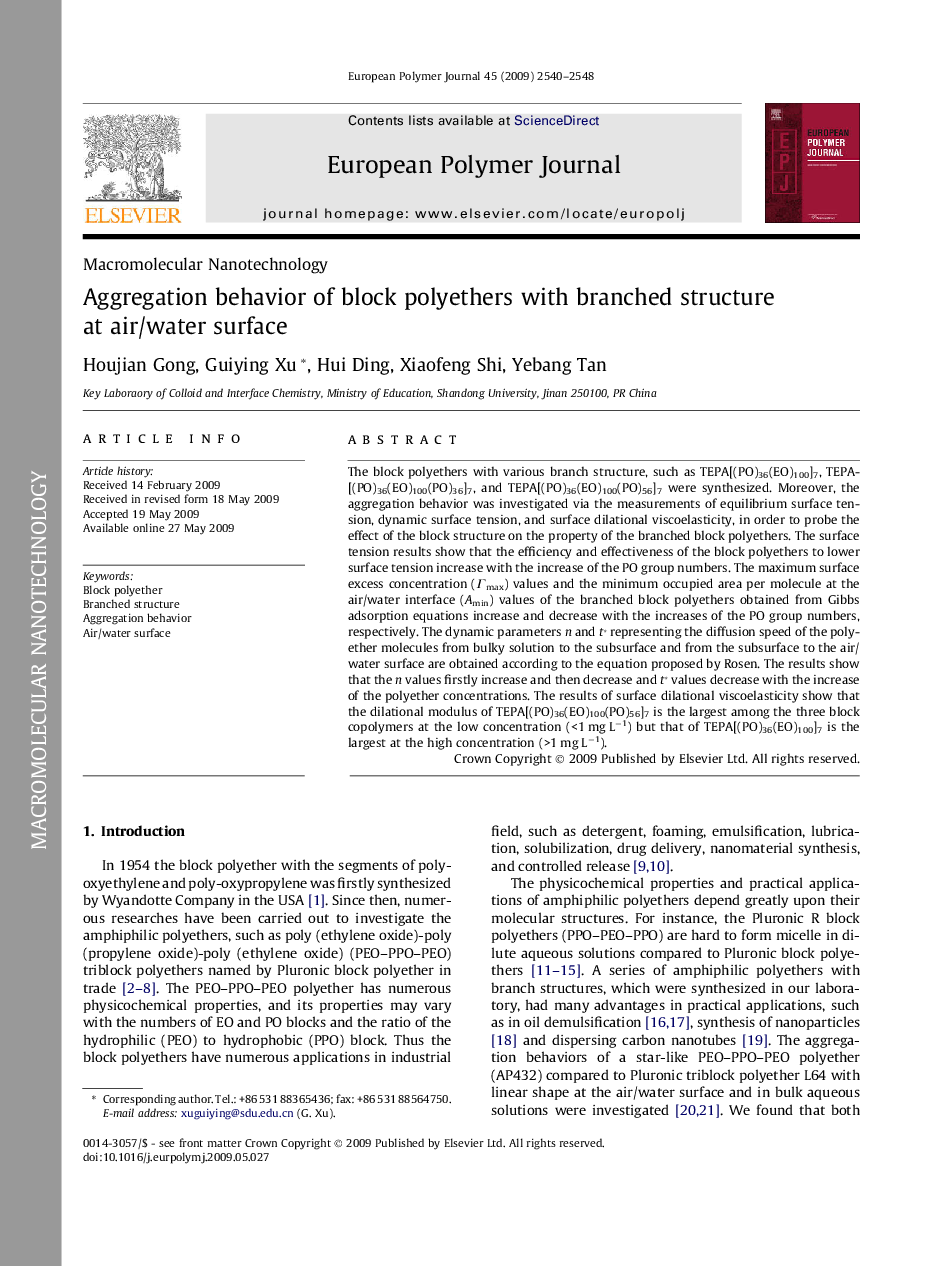| Article ID | Journal | Published Year | Pages | File Type |
|---|---|---|---|---|
| 1400749 | European Polymer Journal | 2009 | 9 Pages |
The block polyethers with various branch structure, such as TEPA[(PO)36(EO)100]7, TEPA[(PO)36(EO)100(PO)36]7, and TEPA[(PO)36(EO)100(PO)56]7 were synthesized. Moreover, the aggregation behavior was investigated via the measurements of equilibrium surface tension, dynamic surface tension, and surface dilational viscoelasticity, in order to probe the effect of the block structure on the property of the branched block polyethers. The surface tension results show that the efficiency and effectiveness of the block polyethers to lower surface tension increase with the increase of the PO group numbers. The maximum surface excess concentration (Γmax) values and the minimum occupied area per molecule at the air/water interface (Amin) values of the branched block polyethers obtained from Gibbs adsorption equations increase and decrease with the increases of the PO group numbers, respectively. The dynamic parameters n and t∗ representing the diffusion speed of the polyether molecules from bulky solution to the subsurface and from the subsurface to the air/water surface are obtained according to the equation proposed by Rosen. The results show that the n values firstly increase and then decrease and t∗ values decrease with the increase of the polyether concentrations. The results of surface dilational viscoelasticity show that the dilational modulus of TEPA[(PO)36(EO)100(PO)56]7 is the largest among the three block copolymers at the low concentration (<1 mg L−1) but that of TEPA[(PO)36(EO)100]7 is the largest at the high concentration (>1 mg L−1).
Graphical abstractFigure optionsDownload full-size imageDownload as PowerPoint slide
